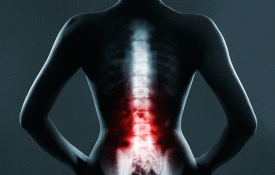Along the upward climb to the corner office there are numerous opportunities for both self-improvement and self-destruction. The fast-paced lifestyles of type A personalities are at risk for vascular disease. Major risk factors are diabetes, hypertension, hypercholesterolemia, and nicotine use. If any of these factors are familiar to you, you should be evaluated by your primary care physician.
Carotid Disease
Carotid artery stenosis (CAS) is a phenomenon that happens in the neck. The peak for CAS is in the 60- to 80-year-old range. The majority of the time CAS is asymptomatic. Carotid disease is one of the three major causes of strokes along with atrial fibrillation and hypertension. When plaque builds up in the vessel it can send particles up in the brain and cause a stroke or transient ischemic attack. Evaluation of carotid stenosis is relatively easy. Antiplatelet therapy such as aspirin and/or Plavix is commonly used to treat this condition. This can be treated with either an open surgery or placement of a carotid stent. Carotid endarterectomy is the gold standard for treatment.
Aortic Disease
The aorta is a major vessel coming out of the heart. The aorta is under tremendous amount of force from the heart. The segment below the kidney arteries is where most of the aortic aneurysms occur. Aortic aneurysms are usually asymptomatic and found incidentally. The vessel expands due to the pressure, and the enlargement in size increases the risk of rupture. Screening is usually done with an ultrasound and should occur between 65 and 75 years old in individuals who have ever smoked. Screening should start at age 60 if the individual has a first-degree relative such as a father or mother who had an abdominal aortic aneurysm.
Aortoiliac occlusive disease (AIO) affects these vessels as well. Instead of dilating, the vessels fill with plaque and become narrowed. Severe AIO can present with buttocks claudication, non-palpable pulses in the femoral area, and impotence. The internal iliac arteries which supply blood flow to the pelvis and provide for normal erectile function.
Lower Extremity Arterial Disease
Peripheral arterial disease (PAD) affects eight million people in America. Much of this goes undetected as people become more sedentary. In the lower extremities, PAD is not unlike a business where supply and demand rule the day. When supply does not meet the demand there is lactic acid buildup, which results in pain. This is the first indication of lower extremity arterial disease. This pain does not occur at rest and it is reproducible. Exercise and lifestyle modifications can arrest the progression of the disease and procedures can be performed to normalize the flow.
The risk factors for PAD include diabetes, smoking, elevated cholesterol, sedentary lifestyle, and hypertension. Modifying the risk factors by stopping smoking, controlling your blood pressure and diabetes, and adding exercise to your routine can greatly reduce your chances of falling victim to PAD.
“The risk factors that puts individuals at risk for deep vein thrombosis are people aged greater than 40, obesity, hormone replacement therapy, pregnancy, a personal or family history of DVT, and the presence of some type of cancers.”
Deep Vein Thrombosis
Deep vein thrombosis (DVT) usually occurs in the larger veins of the legs. The clot in the vein can be substantial and usually causes some sort of swelling. When the clot breaks off it can travel to the lungs and cause a pulmonary embolism. A large pulmonary embolism can cause instant death. With deep vein thrombosis the symptoms can range from mild fullness in your leg to painful swelling of the entire leg. In five to eight percent of patients, some sort of abnormality in the clotting mechanisms of their blood put people at risk for DVT. Fifty percent of the people that have DVT may suffer long-term symptoms. About one third will have a recurrence over their lifetime.
The risk factors that puts individuals at risk for deep vein thrombosis are people aged greater than 40, obesity, hormone replacement therapy, pregnancy, a personal or family history of DVT, and the presence of some type of cancers.
Venous Reflux Disease
The most common of all vascular diseases is superficial venous reflux disease (SVR). Over time the valves in the superficial veins fail and cause SVR. Risk factors for development of venous reflux are pregnancy, obesity, sedentary lifestyle, sitting or standing for long periods of time, and family history. Symptoms include leg fatigue, swelling, varicose veins, and cramps. If left untreated, large varicosities, ulceration, and skin changes can occur. Treatments for SVR are simple and office-based.
I think it is wise to listen to what your body is telling you. Many of these issues of vascular disease have common causes such as diabetes, hypertension, obesity, and smoking. Controlling the risk factors associated with these conditions will greatly improve your chances of success.












































